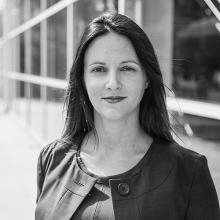California Working Group Needs More Consumer Voices
 Many states are exploring regulatory reform as a means through which to drive innovation in the legal services sector (and hopefully to increase access to justice(1) more broadly). While approaches differ considerably by state, through their efforts, each state is balancing access to justice realities against the need to protect the public.
Many states are exploring regulatory reform as a means through which to drive innovation in the legal services sector (and hopefully to increase access to justice(1) more broadly). While approaches differ considerably by state, through their efforts, each state is balancing access to justice realities against the need to protect the public.
When it comes to discussions on how best to strike this balance, though, the public is rarely involved. As Jim Sandman notes in a recent Talk Justice podcast episode: “Often when issues about proposed regulatory changes implicate protection of the public, we look to lawyers to speak for the public on what is necessary to protect them, rather than going to the public directly and asking them to speak for themselves.”
This is precisely where I fear we now find ourselves with the regulatory reform efforts in California.
Following the sunsetting of the California State Bar Access Through Innovation of Legal Services (ATILS) Task Force, the California State Bar Board of Trustees authorized the formation of the Closing the Justice Gap Working Group (Working Group). Tasked with exploring further the ATILS’ recommendations, the Working Group is expected to ensure a wide variety of perspectives are considered in the course of its work. The path to ensuring that this diversity of perspectives is achieved, however, is less clear after the recent release of the proposed Working Group roster.
A September 24 communication to the Board of Trustees lays out Working Group appointments, and highlights a glaring and disappointing lack of consumer voices among appointed members. To be sure, it is an all-star cast of legal and access to justice experts, including many deeply respected, long-time friends of our organization: Jim Sandman, Rebecca Sandefur, Bridget Gramme, John Lund, and many others listed as alternates. Yet there isn’t a name in the member list that hasn’t been steeped in the legal industry for decades, and very few non-attorneys made the alternate list.
Reading between the lines, it seems we have a diversity of legal perspectives, but where are the consumer voices?
The assumption on which this Working Group seems to be relying is that lawyers and legal experts are best positioned to represent diverse segments of the public. The assumption is that a legal aid attorney can speak on behalf of the needs of low-income litigants or that a legal ethics expert can best design protections for the public. This assumption underlies design thinking approaches, but more and more attention is being given to showing how faulty an assumption this really is.
The reality is that humans can only empathize with the lived experience of another to a certain degree. In our attempts to empathize, we carry what we hear from others through our own personal experiences, priorities, and privileges. And in doing so, “Design thinking has allowed us to celebrate conventional solutions as breakthrough innovations and to continue with business as usual.”(2) This aptly describes what has resulted from countless legal reform efforts—tweaks made to a systemically broken legal system.
The proposed members of the Closing the Justice Working Group do have invaluable perspectives, there is no denying that. They can speak to what they see and hear in their respective practice areas. But they cannot speak for consumers, and I, for one, cannot accept their voices as the voice of the consumer. And we should not. We need real consumers, members of the public, on this Working Group. We need a diversity of perspectives from outside of the legal industry. We cannot keep talking to ourselves and expect the solutions we generate to be anything different from what we have already developed. After all, the existing regulatory structure is the product of great legal minds weighing competing considerations, consulting different perspectives, and deciding on what is best for the public. And yet this system is failing on most measures that are of import to the public.
There is still time to expand the Working Group membership and change the way we create regulatory policy. If we don’t, we risk all this incredible working becoming just another set of recommendations that are equally unresponsive as the system we have now.
Endnotes:
1. I define access to justice as an issue that impacts all segments of our society—from no- or low-income consumers to the wealthy and from small businesses to corporate America.
2. Natasha Iskander, “Design Thinking Is Fundamentally Conservative and Preserves the Status Quo,” Harvard Bus. R. (Sept. 5, 2018), https://hbr.org/2018/09/design-thinking-is-fundamentally-conservative-and-preserves-the-status-quo.


